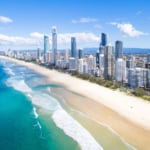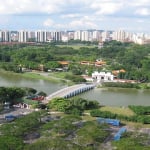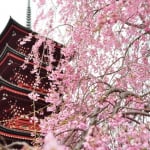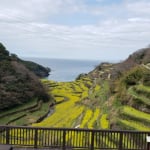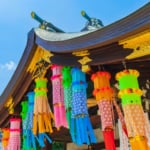Name: Shishi no Reigan
Address: Yashima Summit, Takamatsu City, Kagawa Prefecture
Official Website: http://www.yashima-navi.jp/
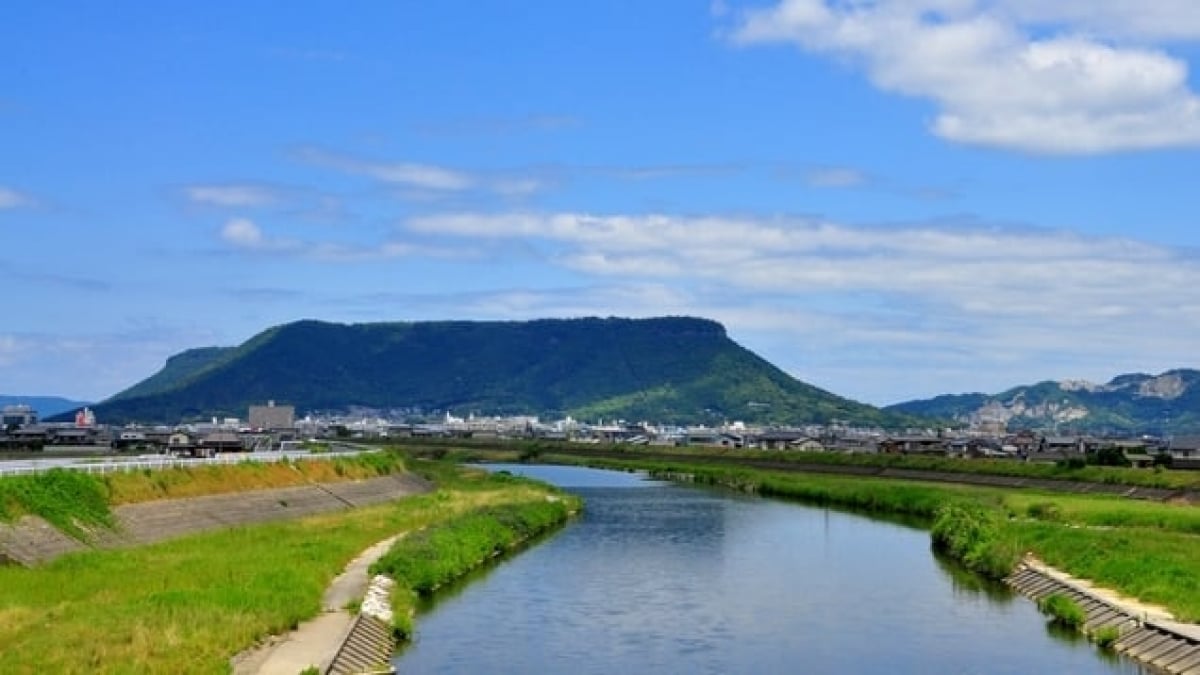
Top 10 Tourist Attractions in Yashima – A Historic Island from Nasu Yoichi to Kukai
In the Seto Inland Sea, there is an island that appears to float like a roof—that is Yashima. Located in Takamatsu City, Kagawa Prefecture, Yashima was designated as a national natural monument in 1934. Since then, it has been cherished as a symbol of Takamatsu City for many years. Yashima continues to captivate people, but what kind of tourist attractions does it offer?
table of contents
[x] close
Top 10 Tourist Attractions in Yashima – A Historic Island from Nasu Yoichi to Kukai
- ◎ Features of Yashima
- 1. The Three Great Viewpoints of Yashima: A Glimpse of the Seto Inland Sea
- 2. Japan’s First National Park – Setonaikai National Park
- 3. Diverse Wildlife & Plant Life
- 4. Yashimaji Temple – The 84th Temple of the Shikoku Pilgrimage
- 5. Rurihou Pond – A Far Cry from the “Blood Pond”
- 6. Uomi-dai – The Fisherman’s Lookout
- 7. Yashima Driveway – A Scenic Japanese Highway
- 8. Shin-Yashima Aquarium – A Beloved Landmark Among Locals
- 9. Bokaiso – A Hotel Famous for Its Sunset Views
- 10. Yashima no Yado Momotaro – A Pet-Friendly Inn for Dogs and Cats
- ◎ Summary
◎ Features of Yashima
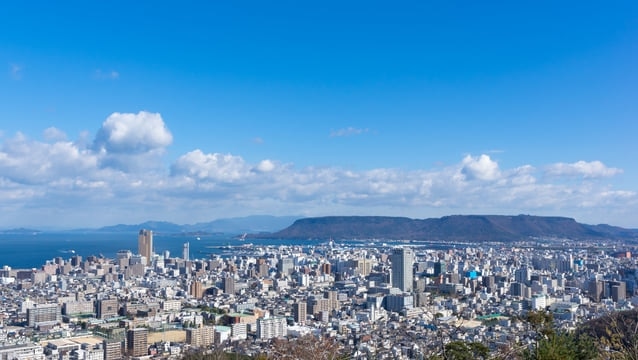
The name Yashima is said to come from the fact that its summit has a flat shape resembling a roof. However, this does not mean that only one of the mountains on the island has a roof-like shape. Rather, the entire island itself is a single mountain, more precisely a mesa, a type of flat-topped plateau.
The term mesa may seem unusual, but it makes sense when you learn that it originates from the Spanish word for "table." However, it is intriguing to wonder why a Spanish term is used. The formation of this unique terrain is believed to be the result of lava that erupted from volcanic activity around 14 million years ago, which spread out horizontally and solidified. Over time, natural erosion shaped it into its current form.
Interestingly, Yashima is sometimes compared to Diamond Head in Hawaii because of its similar shape when viewed from above. Additionally, in Kume Pond, a reservoir in the eastern part of Takamatsu City, Yashima is reflected beautifully on the water's surface. The reflection captures not only Yashima but also the deep blue sky behind it, creating a breathtaking view that can only be fully appreciated in person.
Yashima is also historically significant as the site of the Genpei War battlefield, a crucial turning point in Japanese history. This battle contributed to the decline of the Kyoto-centered imperial rule and led to the establishment of the Kamakura Shogunate.
Furthermore, Yashima is home to Yashimaji Temple, said to have been founded by Ganjin, the founder of the Ritsu school of Buddhism in Japan. With many historical sites, it is a must-visit destination for history enthusiasts.
Originally, Yashima was a true island, not connected to the mainland. However, it was not just an isolated landmass; it played an important role in overseas trade and maritime exchanges. This island status remained until the Edo period, when large-scale salt field development was carried out in the surrounding area. With land reclamation efforts, Yashima was eventually connected to the mainland, becoming part of Takamatsu City as it is today.
To avoid going into too much detail here, we will explore each aspect of Yashima in depth in the following sections.
1. The Three Great Viewpoints of Yashima: A Glimpse of the Seto Inland Sea
The summit of Yashima has a trapezoidal shape and is completely flat. Due to this unique terrain, walking trails have been developed along the north and south sides, featuring observation decks that offer stunning views of the Seto Inland Sea. Among these, three viewpoints are collectively known as the Three Great Viewpoints of Yashima: Shishi no Reigan, Dankorei, and Yukakutei. Each of these locations provides a different perspective of the Seto Inland Sea, creating a rare experience where the scenery varies significantly despite being on the same island and overlooking the same waters. Finding your favorite spot among them is highly recommended.
◆ Shishi no Reigan
Shishi no Reigan is one of the most remarkable observation points, offering a panoramic view of the Seto Inland Sea's beautiful islands. From here, visitors can take in breathtaking views of Takamatsu City, as well as nearby islands such as Ogijima and Megijima.
The name "Shishi no Reigan" comes from a rock formation beneath the observation deck that resembles a lion roaring toward the sea. According to legend, this site was once a place where the monk Kukai practiced ascetic training. It is fascinating to think that this serene, island-dotted landscape of the Seto Inland Sea was once a site of rigorous spiritual discipline.
Additionally, visitors can try "kawarake-nage," a traditional practice of throwing small, dish-shaped clay plates. This activity is believed to bring good fortune for maritime safety and protection from misfortune, making it a meaningful cultural experience for tourists.
Shishi no Reigan is also known as the best location on Yashima for viewing the nightscape. In fact, it is often said to be the most beautiful night view in all of Kagawa Prefecture. For those who appreciate night scenery, this is an unmissable spot to visit.
◆ Dankorei
Next is Dankorei, an observation deck that offers a panoramic view of Dan-no-ura, the most famous battlefield of the Genpei War. From this viewpoint, visitors can also see Shodoshima and Gokenzan in the distance. The name Dankorei dates back to 1897 when a Buddhist nun named Son'un-ni, who had climbed Yashima, named the site in remembrance of the Genpei War. This location is also associated with a famous scene from The Tale of the Heike, where the Genji warrior Nasu no Yoichi is said to have shot an arrow through a fan target.
Name: Dankorei Viewpoint
Address: Yashima Higashimachi, Takamatsu City, Kagawa Prefecture
Official Website: http://www.yashima-navi.jp/
◆ Yukakutei
Lastly, there is Yukakutei, an observation deck located at the northernmost tip of Yashima’s summit. This spot offers a stunning 320-degree panoramic view, allowing visitors to take in breathtaking sights of Shodoshima, Megijima, Otsuchi Island, and Kotsuchi Island. The name Yukakutei has historical significance, as it was given in 1923 when Princess Nagako visited the northern end of Yashima.
2. Japan’s First National Park – Setonaikai National Park
In 1934 (Showa 9), Setonaikai (Seto Inland Sea) became Japan’s first officially designated National Park. Given its rich nature and stunning landscapes, it is no surprise that this area received such an honor. The national park extends beyond Yashima, spanning one prefecture and ten other regions from Kansai to Kyushu. Including the marine areas, it is also Japan’s largest national park.
Name: Setonaikai National Park
Address: Coastal areas of the Seto Inland Sea, including Kagawa Prefecture
Official Website: https://www.env.go.jp/park/setonaikai/
3. Diverse Wildlife & Plant Life
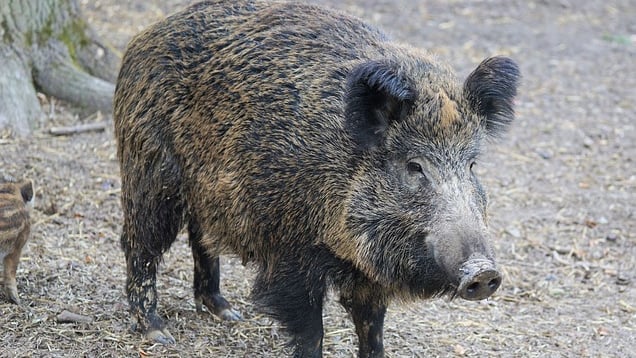
Seto Inland Sea is famous for its mild climate and rich biodiversity. Around 140 species of birds live here, along with various mammals, ranging from small insectivores and bats to large wild boars. The region is also home to rare amphibians, reptiles, and insects.
In the past, pine forests dominated the island, but over time, they were replaced by broad-leaved forests. Today, the northern ridge of Yashima is covered in ubame oak forests, showcasing the island’s diverse ecosystem.
4. Yashimaji Temple – The 84th Temple of the Shikoku Pilgrimage
One of the most popular destinations for visitors to Yashima is a historic temple that serves as the 84th temple of the Shikoku 88 Temple Pilgrimage. This temple, which retains the elegant architectural style of the Kamakura period, was founded in 754 by the Tang monk Ganjin. It is said that the renowned Buddhist monk Kobo Daishi, under the imperial decree of Emperor Saga, visited Yashimaji Temple and relocated its temple complex from the northern peak to its current location on the southern peak. He then carved an Eleven-Faced Thousand-Armed Kannon statue, which was enshrined as the principal deity of the temple.
This Eleven-Faced Thousand-Armed Kannon statue has been designated as an Important Cultural Property of Japan. The temple also features several attractions, including the beautiful Yuki no Niwa garden and a treasure hall. Additionally, Yashimaji Temple is famously known as the inspiration for Studio Ghibli’s animated film Pom Poko. This connection comes from an old legend in which Kobo Daishi, while visiting Yashima, lost his way in the thick mist. According to the tale, Taizaburo-danuki, a legendary tanuki of Yashima, transformed into an old man wearing a straw hat and cape to guide him safely through the fog.
Name: Nanmenzan Senko-in Yashimaji Temple
Address: 1808 Yashima Higashimachi, Takamatsu City, Kagawa Prefecture
Official Website: http://www.88shikokuhenro.jp/kagawa/84yashimaji/
5. Rurihou Pond – A Far Cry from the “Blood Pond”
Despite its rather ominous nickname, this pond has a deep connection to Kobo Daishi (Kukai). According to legend, when Yashimaji Temple was moved to the southern ridge, sacred Buddhist scriptures and a jewel (Hōju) were enshrined in the pond. Because of this, the pond was originally called “Rurihou no Ike” (Jewel of Lapis Pond).
It was believed that a dragon deity would attempt to steal the sacred jewel hidden within the pond. The name “Blood Pond” only came later, during the Genpei War, when samurai from the Battle of Dan-no-ura were said to have washed their blood-stained swords in the pond. This eerie story alone is enough to send shivers down your spine.
Name: Rurihou no Ike (Blood Pond)
Address: Yashima Summit, Takamatsu City, Kagawa Prefecture
Official Website: http://www.yashima-navi.jp/
6. Uomi-dai – The Fisherman’s Lookout
As its name suggests, this observation deck was used to spot schools of fish and signal fishermen out at sea. It also served as a lookout point for monitoring ships navigating the Seto Inland Sea. Two of these observation decks remain on the eastern and western sides of Yashima’s northern peak.
7. Yashima Driveway – A Scenic Japanese Highway
This is a 3.7 km toll road designated as part of the *Genpei Roman Highway* on the *Japan Scenic Byways*. It connects the base of Yashima to its summit, allowing visitors to see the flat-topped mountain up close while enjoying gentle landscapes and historic battle sites of the Genpei War from their car windows.
The previously mentioned observation decks can be accessed via this driveway. Yashima is the setting for famous scenes from *The Tale of the Heike*, including the moment when the Genji warrior Nasu no Yoichi shot an arrow through the fan target set up by the Heike and the scene where Yoshitsune, surrounded by the Heike, risked his life to retrieve his fallen bow from the sea. Visitors can immerse themselves in history while enjoying the scenery. Additionally, from December 31 to January 1, the road is open for nighttime access, offering a breathtaking night view from the summit of Yashima.
Name: Yashima Driveway
Address: 98-1 Yashima Nakamachi, Takamatsu City, Kagawa Prefecture
Official Website: http://www.kotoden.co.jp/publichtm/driveway/
8. Shin-Yashima Aquarium – A Beloved Landmark Among Locals
Opened in 1969, this historic aquarium is located on the summit of Yashima. It is well known for being the first in the world to introduce acrylic panel tanks without obstructive pillars, a now-common feature in aquariums worldwide. It is also popular for allowing visitors to interact with sea lions and dolphins.
Situated at an altitude of 300 meters, this aquarium is one of the rarest in Japan. Due to aging facilities, it once faced the risk of closure, but strong public support for its preservation has led to considerations for renovation and reopening. Aquarium enthusiasts and families may find it worthwhile to visit and contribute to its continued existence.
Name: Shin-Yashima Aquarium
Address: 1785-1 Yashima Higashimachi, Takamatsu City, Kagawa Prefecture
Official Website: http://www.new-yashima-aq.com/newYAQ/home/home.html
9. Bokaiso – A Hotel Famous for Its Sunset Views
The main feature of this hotel is its breathtaking night view. Recognized as one of Japan’s *Top 100 Sunset Inns*, it has been selected as a *Sunset Inn*, making it a true scenic view hotel in both name and reality. The entire building, including the guest rooms and the large public bath, is bathed in the colors of the Seto Inland Sea sunset. Since the summit of Yashima is like a gently elevated hill, guests can enjoy a panoramic view of Takamatsu City’s glittering nightscape. Staying at such a place is sure to strengthen bonds, whether with family or a romantic partner. Of course, it is also a great choice for friends to enjoy deep conversations throughout the night.
The guest rooms have an Asian resort ambiance, with all furniture and decor custom-made, ensuring an interior that complements rather than competes with the stunning night views of Takamatsu. The cuisine is another highlight, featuring fresh seafood sourced from the Seto Inland Sea. Additionally, the specially selected *Kuro Wagyu* beef from a contracted farm is so tender that it melts in your mouth.
Moreover, the beef comes with an *individual identification number*, allowing guests to verify details such as birth date, gender, mother’s identification number, breed, and farm history, ensuring full transparency. The hotel offers both sukiyaki and shabu-shabu courses, both of which are highly popular. It is a hotel that promises a fulfilling journey to Yashima, satisfying both body and soul—and of course, your appetite.
Name: Bokaiso Hotel
Address: 1784-15 Yashima Higashimachi, Takamatsu City, Kagawa Prefecture
Official Website: http://www.bokaiso.com/
10. Yashima no Yado Momotaro – A Pet-Friendly Inn for Dogs and Cats
The defining feature of this hotel is that guests can stay with their beloved dogs. For dog lovers who consider their pets to be part of the family, this is an essential accommodation option when visiting Yashima. Every room allows dogs, providing a安心 experience for pet owners. The accommodation fee for dogs varies depending on the breed, so be sure to check the official website. Each room can accommodate up to two dogs. However, pet food is not provided, so guests must bring their own.
Renovated and reopened in April 2011, each guest room consists of three areas: a 12-tatami-mat Japanese-style room, a flooring area, and a bedroom. Additionally, it features an observation deck and a semi-open-air cypress bath. Having a private bath with a full view of the Seto Inland Sea allows guests to relax and unwind in a luxurious setting.
The cuisine blends the bold flavors of local dishes with the delicate refinement of Kyoto-style cuisine, creating a unique *Momotaro* menu. The highlight is *Genpei-yaki*, complemented by a Kyoto-style kaiseki meal. The menu changes monthly, making it a delightful experience no matter the season. Moreover, as this hotel only accepts three groups per day, it is an ideal choice for those who prefer a quiet and intimate stay.
Name: Yashima no Yado Momotaro
Address: 1821 Yashima Higashimachi, Takamatsu City, Kagawa Prefecture
Official Website: http://www.r-momotaro.com/
◎ Summary
How was it? Yashima in Takamatsu City is a place where you can reflect on Japan’s rich history, from the journeys of Ganjin and Kobo Daishi to the battles of the Genpei War and the salt field developments of the Edo period. At the same time, it offers the modern beauty of a stunning nightscape and the satisfaction of delicious local cuisine. With so much to experience, there is no reason not to visit.
For your next trip, consider exploring Yashima.
RELATED ARTICLES
REGIONS
CATEGORIES
FEATURED ON Guide
-
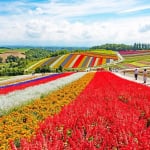
Where will you go for the summer vacation? Introducing recommended spots for domestic travel
-
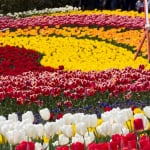
Kaizu City’s Recommended 7 Tourist Spots. Enjoy the Culture and History Nurtured by Wajū!
-
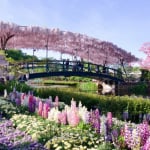
What Makes Ashikaga Flower Park So Special? A Treasure Trove of Photo-Worthy Spots!
-
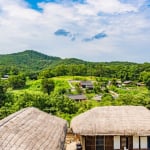
600 Years of Radiant Tradition: Korea’s Historic Villages of Hahoe and Yangdong
-
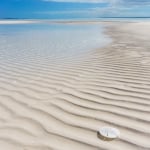
Two-Colored Seas and a Pink Beach! 4 Must-Visit Spots in North Eleuthera
MOST POPULAR ON Guide
-
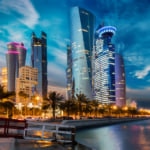 1
1Doha: Must-see Attractions in the Capital of Qatar
-
 2
2Toronto: 10 Things to do in this Picturesque Canadian City
-
 3
3Amarillo: A City Famous for It’s Amazing Canyons, Great History and Music
-
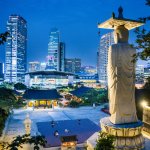 4
4South Korea: Dazzling Scenery, Rich Culture and Fascinating History
-
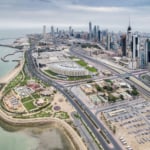 5
5Kuwait: A Country in Middle East Asia Famous for Hot Sand Dunes and Stunning Cityscape

